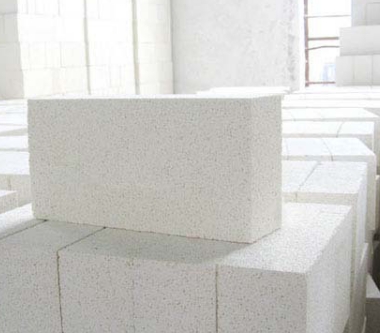- 09
- Feb
Zeziphi izinto ezichaphazela ukusebenza kwezitena zokugquma i-thermal lightweight?
Zeziphi izinto ezichaphazela ukusebenza kwe izitena zokufakelwa kwe-thermal ezilula?
Lightweight thermal insulation bricks have complex structure and harsh working environment, and many factors affect their thermal insulation effect. Moreover, various factors influence each other and are related to each other, making analysis and research difficult to carry out. However, among the many influencing factors, the material composition and structure, air permeability and air permeability, bulk density and temperature of izitena zokufakelwa kwe-thermal ezilula zizinto eziphambili.

Material composition and structure The chemical mineral composition and crystalline structure of the material are the primary factors affecting the thermal conductivity of lightweight insulation bricks. Generally speaking, the more complex the crystal structure of the lightweight insulation brick, the lower its thermal conductivity. The solid phase of a substance can be simply divided into a crystalline phase and a glass phase. Due to vibration and collision, atoms (ions) transfer kinetic energy from atoms (ions) with higher kinetic energy to other atoms (ions) with lower kinetic energy, and the atoms (ions) in the glass phase are arranged in a disorderly manner, so The resistance encountered during movement is higher than the orderly arrangement of crystal phases. Therefore, the thermal conductivity of the glass phase is lower than that of the crystalline phase. However, after the temperature rises to a certain level, the viscosity of the glass phase decreases, the resistance to movement of atoms (ions) decreases, and the thermal conductivity of the glass phase increases. But the crystalline phase is the opposite. When the temperature rises, the kinetic energy of the atoms (ions) increases and the vibration increases, so that the free path is shortened and the thermal conductivity decreases. In the internal structure of light insulation bricks, the solid phase is separated by many pores of different sizes, and continuous solid phase transfer cannot be formed in terms of heat. Gas phase heat transfer replaces most of the solid phase heat transfer, so heat conduction The coefficient is very low.
I-porosity kunye ne-porosity ye-refractories eneempawu ze-pore zihambelana ngokungafaniyo ne-coefficient conductivity ye-thermal, kwaye i-coefficient conductivity ye-thermal iphakama ngokuhambelana nokunyuka kwe-porosity. Ngeli xesha, ukusebenza kwezitena ze-insulation lightweight zibalaseleyo. Kodwa xa i-porosity ifana, incinci isayizi ye-pore, i-uniform yokusabalalisa, kwaye iyancipha i-thermal conductivity. Kwimibhobho encinci, umoya kwi-pores ugxininiswe ngokupheleleyo kwiindonga ze-pore, i-thermal conductivity kwi-pores iyancitshiswa, kwaye i-thermal conductivity kwi-pores iyancitshiswa. Nangona kunjalo, njengoko ubungakanani bomngxuma womoya bukhula, ukusasazeka kwemitha yobushushu kudonga lwangaphakathi lomngxuma womoya kunye nokuhanjiswa kobushushu be-convective komoya kumngxuma womoya kwanda, kunye ne-thermal conductivity iyanda. Ngokutsho koncwadi olufanelekileyo, xa i-radiation yobushushu incinci kakhulu, ngakumbi xa i-pores emide isenziwa kwi-jet direction, i-pores encinci ivame ukuvelisa iziphumo zemitha yokushisa. Ngamanye amaxesha, ukuhanjiswa kobushushu kwimveliso enye yepore kuphezulu kunemveliso eneepores. Isenzeko sokuba shushu. I-thermal conductivity ye-pores evaliweyo incinci kunee-pores ezivulekileyo.
The thermal conductivity of thermal insulation bricks with lighter bulk density has a linear relationship with bulk density, that is, as the bulk density increases, the thermal conductivity also increases. The volume density directly reflects the internal porosity of the lightweight insulation brick. The low bulk density indicates that there are a lot of pores inside the product, the contact points between the solid particles are reduced, the solid phase heat conduction is reduced, and the thermal conductivity is reduced.
The thermal conductivity of light-temperature thermal insulation brick has a linear relationship with temperature, that is, the thermal conductivity increases with the increase of temperature. Compared with dense refractory materials, the thermal conductivity of lightweight insulation bricks decreases with increasing temperature. The reason is that dense refractory materials mainly conduct heat in the solid phase. When the temperature rises, the thermal movement of the product molecules intensifies, and the thermal conductivity increases. The structure of lightweight insulation bricks is dominated by gas phase (65~78%). When the temperature rises, the change in thermal conductivity is always smaller than that of the solid phase.
